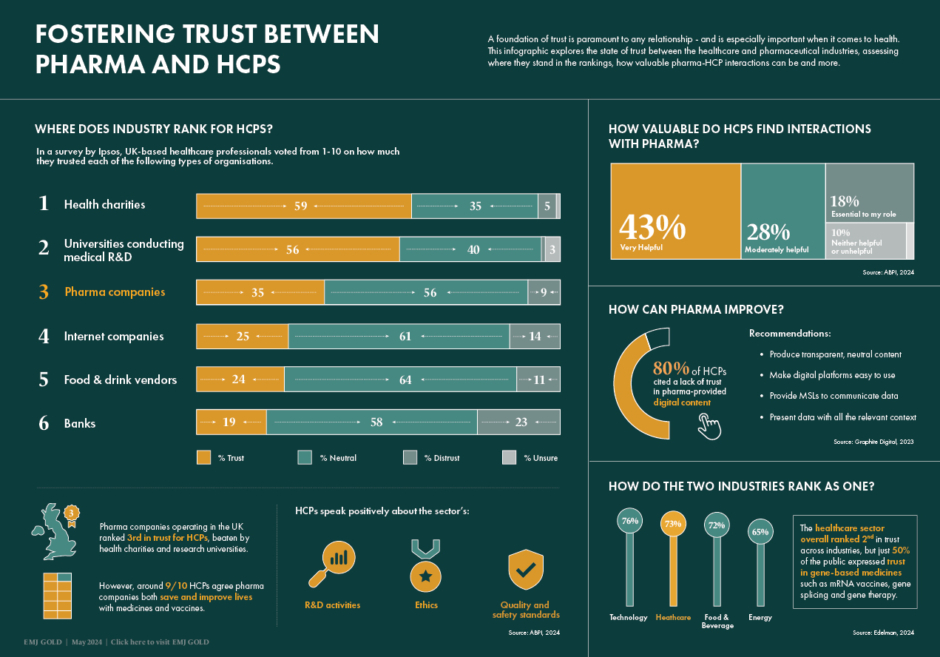How can companies best leverage their KOLs earlier in the product lifecycle, and how do KOLs themselves want to be involved?
Words by Saša Janković
From physicians and hospital executives, to health system directors, researchers, patient advocacy group members and more, Key Opinion Leaders (KOLs) in healthcare play a vital role for pharmaceutical companies.
These trusted fountains of knowledge have proven experience and expertise in a particular field and are well known for their influence when it comes to pharmaceutical marketing, encouraging – or even discouraging – healthcare professionals to trial a new product or therapy, and steering patients and consumers toward trusted brands.
But what is less developed – and sometimes underutilised by pharma – is their pre-launch role within another function. Right from the R&D stage, KOLs can be engaged by medical affairs teams to gain insights, contribute medical knowledge, generate data and more.
Since it’s always nicer to be invited to a party and decide if you want to go, rather than the host deciding it’s not your thing and not inviting you, medical affairs should be actively considering how early and thoroughly their KOLs want to be involved in their activities.
“As the critical success factors of a pharma product change along its lifecycle, so do the KOL profiles you need, and what you need them for,” explains Inge Cornelis, Director, Client & Product Projects, CELforPharma.
So, how can medical affairs and medical science liaisons (MSLs) best engage with their KOLs in order to gain insights and share education pre-launch?
As the critical success factors of a pharma product change along its lifecycle, so do the KOL profiles you need
Engage early
According to the latest ZS Medical Affairs Outlook report 2023 of what it calls “the medical affairs ecosystem”, more than 85% of the KOLs it surveyed said they would like to begin scientific engagements with MSLs before launch. However, many companies remain in the dark about how and when to engage thought leaders.
This is backed up by Sarah Jarvis, Global Lead for the Medical Consulting Practice, ZS, and co-author of the report, who says her team gets questions “all the time” about when companies should engage with KOLs. Speaking on the GOLD podcast, she says: “There are KOLs who want to be engaged at phase 1, there are those who want to be engaged at phase 2, and by phase 3 I would say the majority [want to be engaged].”
At phase 1, KOLs are keen to provide input on clinical trials and research programmes. At phase 2, the latest pipeline developments and product information have been identified as most valuable. However, as Jarvis notes, phase 3 is where the real opportunity lies.
More than a third of external respondents said they’d prefer to start engaging during phase 3 clinical trials, with over a quarter citing clinical trial design as the type of information they’d like to receive. This is a trend worth noting, but Jarvis also urges companies to “think about the individuals and their needs” and be ready to “pivot” at any point.
Create collaborations
In addition to KOLs wanting more information from medical affairs teams, previous ZS reports have shown that KOLs want to collaborate more with medical affairs organisations, prompting the researchers to look more closely at the specifics for 2023.
Alongside the findings highlighted by Jarvis, Sunil John, Principal and Co-Lead, Global Medical Affairs Practice, ZS, tells the GOLD Podcast that respondents are looking for more cross-functional meetings, engagement avenues and product and disease expertise.
However, John argues that “what’s really important to remember is why a KOL will want to collaborate with you”. For example, a staggering 73% of respondents identified trials and support programs to aid greater access to therapies as extremely important to them, followed by 57% with an interest in assisting and creating educational materials.
“It’s important to operate at the intersection of what medical affairs professionals think are important and where the KOL initiatives are happening,” states John. “Together they can really have an impact.”
What’s really important to remember is why a KOL will want to collaborate with you
The DE&I impact
Despite the common goal of delivering value to patients and improving the patient experience, a continuing hurdle for both pharma companies and KOLs is the lack of representation seen in trials – running the risk of both failing to address, and leading to, health inequities.
On the positive side, more than 85% of KOLs who responded to the ZS survey said they found initiatives from medical affairs organisations to address health inequities – including access programs, payment support initiatives, diverse sets of stakeholders and patient education support – to be moderately effective or extremely effective.
With all this in mind, it seems the best way to attract, engage and collaborate with KOLs is by emphasising that their involvement is vital – and wanted – at every step of the way. If your organisation recognises that it needs more influencers at the party, the time to get those invitations out is definitely now.
How to engage and collaborate with KOLs
“The biggest mistake we see medical affairs teams making is that they forget to go through all the steps that you need to go through to build a relationship with any opinion leader,” says Scott Thompson, Co-Chief Executive Officer, Acceleration Point.
In the Acceleration Point Playbook report shared by the Medical Affairs Professional Society, he offers the following advice on how MA teams can build relationships with KOLs:
• Every relationship with an opinion leader – whether an established KOL or an emerging digital opinion leader (DOL) – should begin with a formal introduction. This is often the responsibility of the medical science liaison.
• The next stage in the relationship involves providing value through scientific exchange. Medical affairs can share approved materials such as recent publications, newly released data or educational materials about disease state. In every case, the purpose is an unbiased information exchange, with the goal of sharing key data or scientific insights and listening, on a peer-to-peer level, to the expert’s perspective on that information.
• Finally, once the relationship has been established, medical affairs can begin to bring insights from the KOLs and DOLs whom they’re engaging back into their organisation. This can take the form of standard engagements, like asking the KOL or DOL to serve on an advisory board, consult on the creation of materials or speak within a medical education programme.






